Memory foam, or viscoelastic polyurethane foam, is an integral component of pillows, mattresses, and even shoes. Originally designed for use by NASA, this material has been around since the ’60s.

Today, it’s widely used by consumers from around the world, including those with postural problems and neck or back pain.
But what is memory foam? Most importantly, does it live up to the claims?
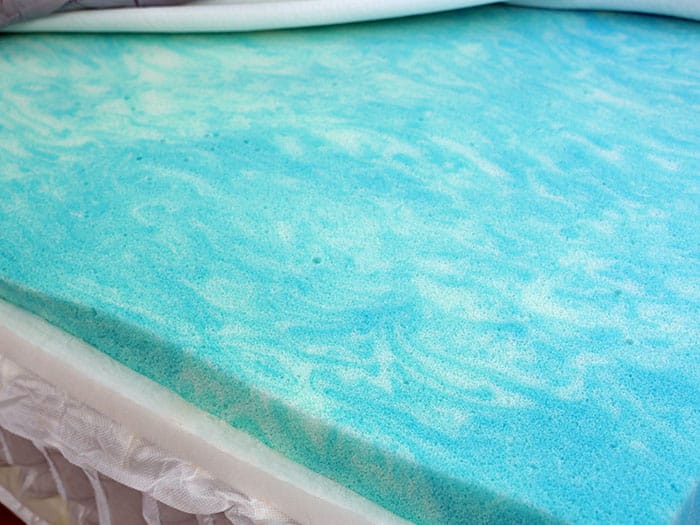
First of all, not all memory foam is created equal. Its quality and durability depend on the formulation and manufacturing process. Here’s what you should know about this material and its purported benefits.
What Is Memory Foam?
Memory foam has emerged as one of the most popular materials for pillows, mattresses, and other bedding items.
What makes it stand out is its ability to evenly distribute the body weight, which may help reduce pressure on your back and joints. The foam also molds to your body shape, offering superior comfort.
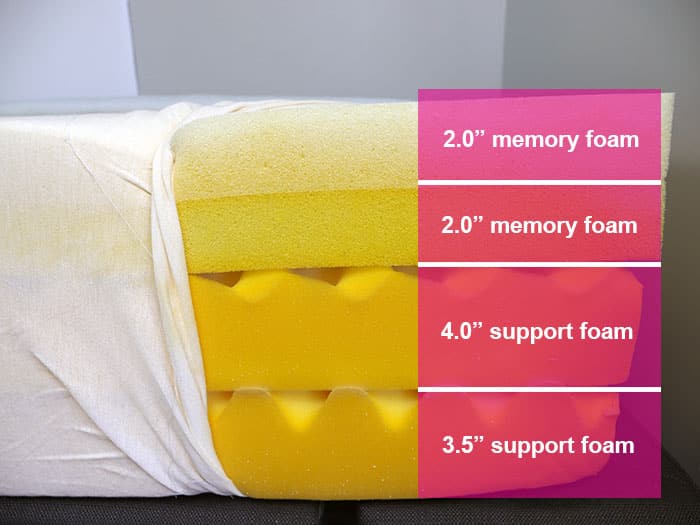
These potential benefits are due to its viscoelastic properties, meaning that the foam exhibits a combination of elastic and flow-like behavior. Simply put, it can stretch or change its shape and return to its initial form once the pressure is removed.

Polyurethane, the primary component of memory foam, is a plastic material that can be molded into almost any shape. It’s widely used in the manufacturing of furniture, bedding, adhesives, car bumpers, clothing, home appliances, and other goods.

Memory foam consists of low-resistance, or viscoelastic polyurethane, and several other chemicals, such as hydrocarbons.
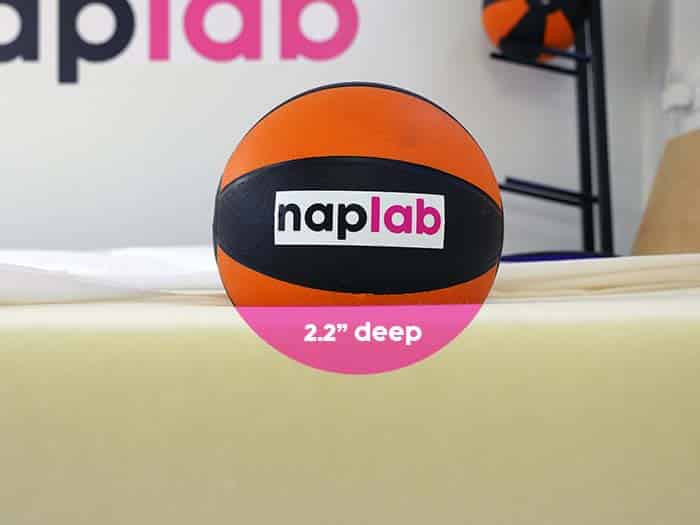
Compared to polyurethane foam, this material is denser and more temperature-sensitive. Generally, it becomes softer and sinks more in response to body heat.
The degree of comfort and support offered by memory foam mattresses depends on the type of foam. There’s traditional memory foam, open-cell foam, gel foam, copper foam, and everything in between.
NASA Origins
In the early ’60s, NASA researchers created a new material called slow spring back foam, or memory foam.
Initially, they used it for the manufacturing of airplane seats due to its shock-absorbing properties. Over the years, its uses expanded to bedding products, shoe insoles, car seats, prosthetics, and sports accessories.

This new material was prized for its unusual viscoelastic properties.
It was the first product of its kind to mold to the contour of a person’s body and distribute the pressure evenly. Moreover, it had the ability to return to its original shape.
Memory Foam Uses
Memory foam was never patented, which allowed manufacturers across various industries to improve it and develop their own versions. The technology behind it continued to evolve over the next decades.

Today, manufacturers use memory foam in mattresses, mattress pads, pillows, mattress toppers, motorcycle saddles, orthotic braces, wheelchair seat cushions, and other consumer goods.
- Memory foam mattresses: These types of mattresses may take some of the pressure off your neck and back, leading to a better night’s sleep.
- Bike seat covers: Cyclists often use memory foam bike seat covers to protect their hips and sitting bones from shock and feel more comfortable during long rides.
- Braces: Depending on the brand, memory foam braces can protect the injured area while increasing comfort and support.
- Memory foam seat cushions: Cushions made of memory foam may help with coccyx pain, backaches, and other problems caused or worsened by prolonged sitting.
Mattress manufacturers started to use this material in 1991. We’ve all seen those TV ads featuring the Tempur-Pedic Mattress. Nowadays, consumers can choose from hundreds of brands, such as Loom & Leaf, WinkBeds, Nectar, Saatva, and others.
Types of Memory Foam
Most stores nowadays offer different types of memory foam pillows, mattresses, and other bedding items. Depending on your needs, you can choose any of the following:
- Traditional memory foam has a similar composition as the original memory foam used for mattresses in the ’90s. It molds to the body shape and takes some of the pressure off your joints but tends to trap heat.
- Open-cell memory foam allows for better airflow than traditional memory foam. Its composition is similar to that of polyfoam.
- Gel-infused memory foam, which features small gel microbeads to prevent overheating.
- Plant-based memory foam, an eco-friendly alternative to petroleum-based foam. The products made from this material contain a blend of polyester or natural latex and plant fibers, such as bamboo.
- Copper-infused memory foam, a new material that claims to dissipate excess body heat. Manufacturers say that it also wards off bacteria and prevents allergic reactions.
While it’s true that copper has antimicrobial properties, there isn’t enough evidence to support the purported benefits of copper-infused materials.
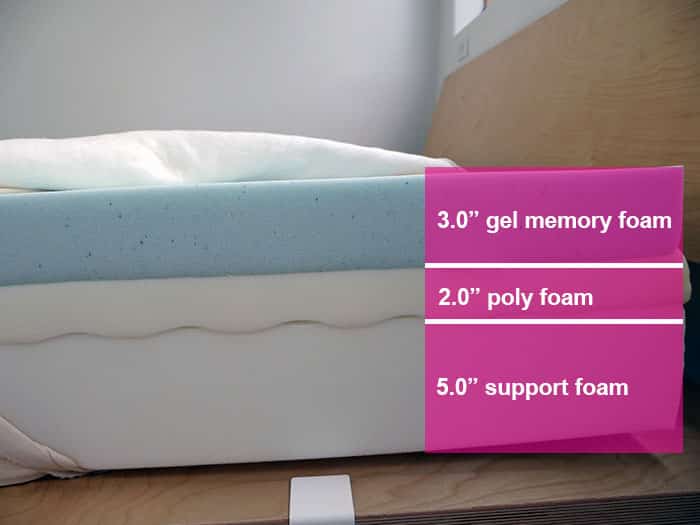
Some manufacturers also use Certi-PUR® certified foam.

This material is free of heavy metals, ozone depleters, formaldehyde, and certain phthalates. Compared to other types of memory foam, it releases lower amounts of volatile organic compounds (VOCs). Therefore, it’s safer for your health and the environment.
Does Memory Foam Live Up to the Claims?
Memory foam technology has come a long way since its beginnings in the ’60.

Initially, this material has received some criticism for its tendency to retain body heat. However, newer products—like gel-infused and open-cell memory foam—reduced this problem.
The benefits of memory foam range from pressure relief to better sleep. Depending on the brand and model, some products may also reduce or prevent bacteria and mold growth. High-end memory foam is often made from materials with antibacterial and hypoallergenic properties.
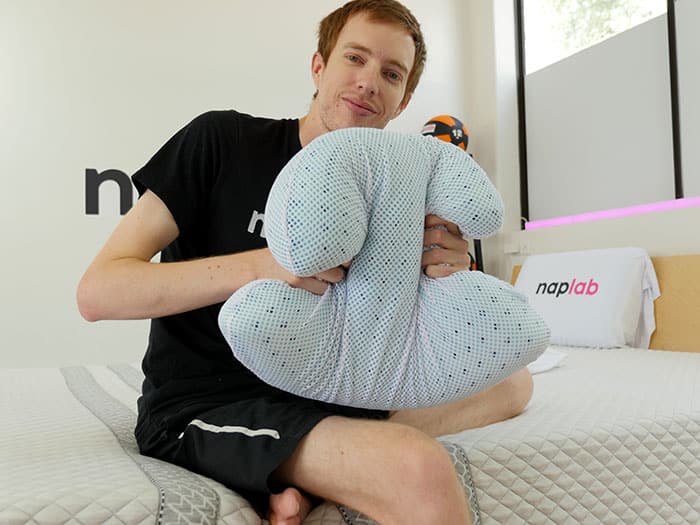
Memory foam pillows and mattresses are said to help with sleep apnea and other conditions, but there’s little evidence to back up these claims.
As WebMD notes, this technology is relatively new, so more studies are needed to confirm its health benefits. So far, researchers agree that memory foam may indirectly improve sleep and relieve pressure points.
Let’s take a closer look at the key advantages of memory foam.
Benefits of Memory Foam

- Promotes good spine alignment — Memory foam molds to your body shape and distributes your weight evenly, supporting the natural curve of your spine. However, spine alignment also depends on your sleeping position.
- Limits motion transfer — This material isolates motion, meaning that your sleep won’t be disturbed if your partner is tossing and turning in bed. You can see a side-by-side comparison of latex vs. memory foam motion transfer here.
- Reduces pressure on the spine and joints — Memory foam may help relieve pain and aches by keeping your weight evenly distributed. In a small study, subjects who slept on memory foam pillows while undergoing chiropractic treatment had a greater reduction in chronic neck pain compared to those who only received treatment.
- May improve comfort during sleep — Some people find memory foam mattresses and pillows more comfortable than their traditional counterparts due to their softness.
- Retains body heat — Cold sleepers often prefer memory foam over other materials due to its ability to hold onto heat. However, its heat retention properties can be a drawback for those who tend to warm up at night.
- Increased durability — This material is durable and can last for years with proper care. High-quality memory foam mattresses have a lifespan of 10 years or longer, depending on their composition, foam density, and thickness.
Are There Any Drawbacks?
Many of the complaints related to memory foam are subjective.
For example, some people may experience increased sweating when sleeping on memory foam mattresses or pillows. Others dislike the feeling of sinking into the mattresses.

Below are some potential drawbacks to consider before buying memory foam pillows or mattresses.
#1. Memory foam has a low tolerance to moisture.
Spills, urine, and other liquids can ruin the foam and promote mold growth. Ideally, use a waterproof mattress cover to protect the foam from stains and stains.
#2. Some types of foam may contain dangerous chemicals.
These chemicals may include things like acetone, toluene, benzene, formaldehyde, and other compounds that may not be safe, especially for people with allergies. If you’re worried about it, consider using Certi-PUR® certified foam or a similar option.
#3. Memory foam mattresses and pillows may release varying levels of VOCs.
Though these chemicals are present in low concentrations, they may affect children’s health in the long run. To stay safe, purchase a different type of mattress for your child. Immediately after unboxing the mattress, allow it to off-gas for a couple of days (until the smell goes away) in a well-ventilated area.
#4. It can also have a chemical-like smell.
Cheap memory foam mattresses with high VOCs are the most likely to cause this problem. If you purchase a new mattress, let it air out before using it.
Plant-based foam may release VOCs, too. The Environmental Working Group recommends asking if the foam has been tested for VOCs before buying a new mattress. Note that VOC levels vary among brands and tend to increase in response to body heat.
As far as cleaning goes, see our guide on how to get pee out of a mattress or how to clean a mattress. Use as little water as possible to prevent mold growth.
Make an Informed Decision
Memory foam has revolutionized the bedding industry. This material not only offers superior comfort, but it also keeps your body in proper alignment. Plus, it’s durable and versatile.

Like with most products, its quality depends on the brand and materials used. Cheap memory foam can be high in VOCs and other potentially harmful chemicals. Quality foam, on the other hand, can run into thousands.
Research your options before switching to a new mattress or pillow. Double-check its composition and look up the brand online. Ideally, opt for low-VOC certified products with no added PVC, solvent-based glues, flame retardants, or chemical antimicrobial agents.
Meanwhile, check out our guide on how much a mattress cost and how long do mattresses last. Both can help inform your shopping and research process.
FAQ
Memory foam is good for deeper compression, more hug and contour, and improved pressure relief.
Memory foam is known for its viscoelasticity. This is the foam’s ability to contour around an object (ie: your body when it lies on the bed), and then return to its natural form and shape once the pressure is no longer applied. Some regular foam may also be viscoelastic, but not all. All memory foam is viscoelastic.
In most cases yes. Almost any foam material is better than an air mattress. Air lacks the ability to provide lasting support and pressure relief, although it doe work well for last-minute guests or sleepovers with kids.
Citations
- Gedney, R. (2019, January 28). An introduction to viscoelasticity dynamic mechanical analysis. Quality Magazine RSS. Retrieved October 13, 2021, from https://www.qualitymag.com/articles/95253-an-introduction-to-viscoelasticity-dynamic-mechanical-analysis.
- Center for the polyurethanes industry (CPI). American Chemistry Council. (n.d.). Retrieved October 13, 2021, from https://www.americanchemistry.com/industry-groups/center-for-the-polyurethanes-industry-cpi.
- NASA. (n.d.). Forty-year-old foam springs back with new benefits. NASA. Retrieved October 13, 2021, from https://spinoff.nasa.gov/Spinoff2005/ch_6.html.
- NASA. (n.d.). Memory foam supports and shapes in women’s apparel. NASA. Retrieved October 13, 2021, from https://spinoff.nasa.gov/Spinoff2019/cg_4.html.
- Science Around Michigan. (2021, February 24). What does science say about copper compression clothes? Science Around Michigan. Retrieved October 13, 2021, from https://www.sciencemi.org/what-does-science-say-about-copper-compression-clothes/.
- Stuart, A. (n.d.). Memory foam mattresses: Benefits and disadvantages. WebMD. Retrieved October 13, 2021, from https://www.webmd.com/sleep-disorders/features/memory-foam-pros-and-cons.
- Soal, L. J., Bester, C. M., Shaw, B. S., & Yelverton, C. (2019, October 9). Changes in chronic neck pain following the introduction of a visco-elastic polyurethane foam pillow and/or chiropractic treatment. Health SA = SA Gesondheid. Retrieved October 13, 2021, from https://www.ncbi.nlm.nih.gov/pmc/articles/PMC6917418/.
- Scarfato, P., Maio, L. D., & Incarnato, L. (2016, October 18). Structure and physical-mechanical properties related to comfort of flexible polyurethane foams for mattress and effects of artificial weathering. Composites Part B: Engineering. Retrieved October 13, 2021, from https://www.sciencedirect.com/science/article/abs/pii/S1359836816314172.
- Reporter, D. T. H. D. (2019, July 10). Is your mattress releasing toxins while you sleep? WebMD. Retrieved October 13, 2021, from https://www.webmd.com/sleep-disorders/news/20190710/is-your-mattress-releasing-toxins-while-you-sleep.
- Mattresses. EWG’s Healthy Living: Home Guide. (n.d.). Retrieved October 13, 2021, from https://www.ewg.org/healthyhomeguide/mattresses/.



